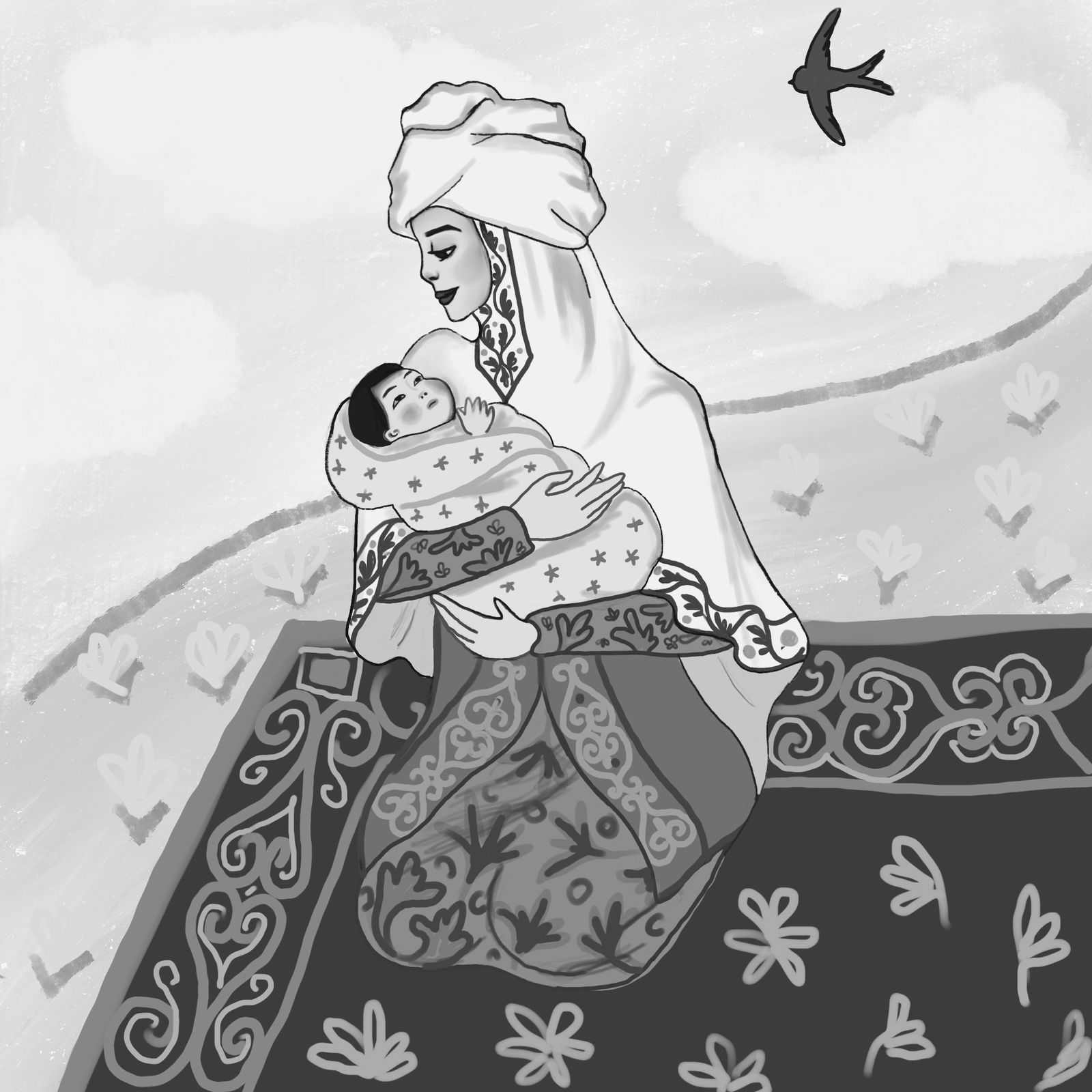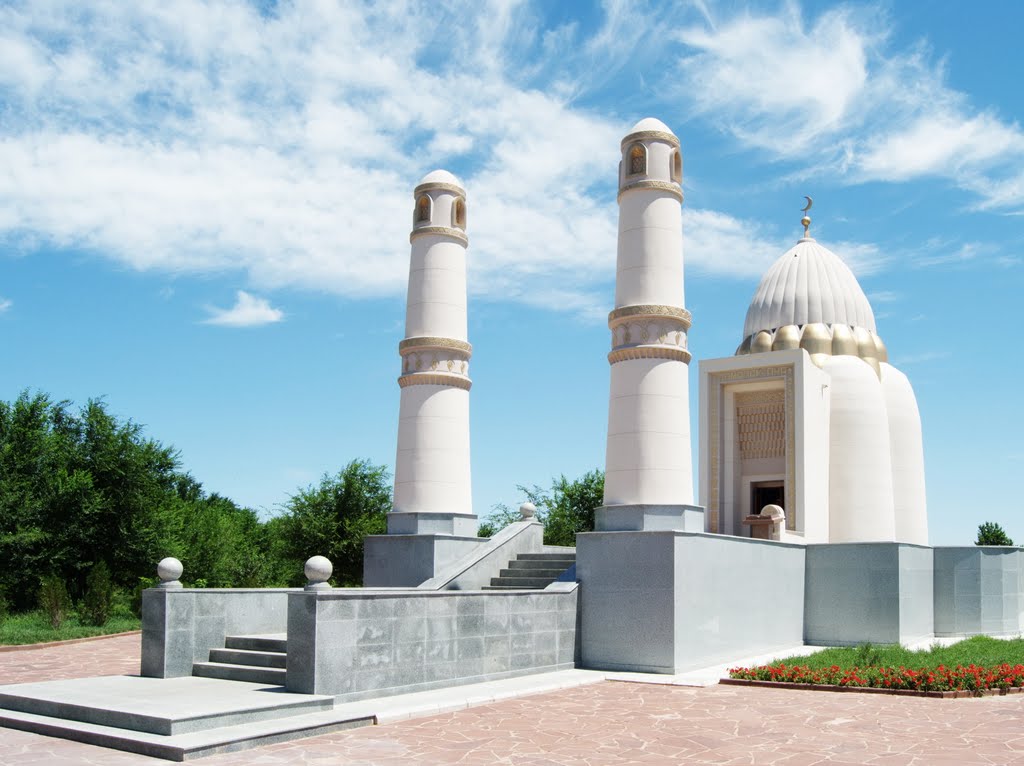
Domalak-ana - the personification of wisdom and nobility

Many mothers in the Great Steppe have earned the special respect of people for their far-sightedness and wisdom. They weren’t only the keepers of the hearth, but also worked for the benefit of the whole nation. Many of them became a muse for the nomads and inspired them to new exploits. Today we will tell you the story of one woman who became a legend and will forever remain in our memory.

The younger wife of Baidibek bi - Nurila - is one of the great mothers who have remained in history. People appreciated and respected her as the mother of the nation. Domalak-ana is a symbol of wisdom and nobility.
According to legend, the tribes of the Senior Juz, Alban, Suan, and Dulat are her descendants.
Nurila was born in 1378 in the city of Turkestan. She was the daughter of Shaikh Mizambek, the caretaker at the grave of Khoja Ahmed Yassawi. There are several legends about her acquaintance with Baidibek bi. One of them says: “Baidibek bi meets Domalak-ana for the first time when he comes to Turkestan to visit the grave of the famous Kazakh Sufi. Nurila's sharp mind and decency surprised him. In the mausoleum of Khoja Akhmet Yassaui, one sauegei (fortuneteller) advises him: "There is one girl here who shines like the sun, radiates God's grace and mercy, take her as a wife." Baidibek bi followed his advice and soon married Nurila.
Another version of this story says: “According to the medieval chronicles, Nurila was a servant in the house of Baidibek bi. The girl accidentally fell into the well when she was about to get water from it. Although Baidibek bi had many servants, he used to water the horses himself. Approaching the well, he saw Nurila at the bottom. Bi saved the girl and fell in love with her at that moment. Nurila became his third wife and continued his family.
No one knows exactly why she was called Domalak (round) mother. According to one version, the word "domalaq-ana" in Persian means "dikhnat ana", that is, "holy mother".

The descendants of Domalak-ana were distinguished by intellect, knowledge and led the people. Her son Zharykshak was an adviser to the Tashkent Emir, later became the ruler of Jeti su, and then the chief vizier of Yesen-Buga Khan.
Kazakhs have long appreciated far-sighted women. Listened to their advice and reason. This is evidence of the wisdom of nomad women. Nurila was smart, sensible, and influential, many of them were sure to heed her advice. In addition, she was a seer. There is also a legend about a prophecy that she made to her husband: “Once upon a time, an enemy suddenly attacked the village of Baidibek, located at the foot of the Karatau ridge, and stole thousands of his horses. At that time Baidibek and other horsemen were far from the village. Hearing a message about the attack, Baidibek gathered a detachment and went in search of six sons from his elder wife Sarah Baibishe. Out of a thousand horses stolen in one day, one wild, the unbroken horse returned. It was tied to a crossbar near Domalak-ana's yurt. “Do not follow the enemies, the stallion remained with us. In six days the herd will return to you. May the horsemen of our village be safe and sound. That is my desire,” she said. But he, not listening to his wife, went to battle with the enemy. However, a well-armed enemy defeated Baidibek's detachment. Six of his sons were killed in this battle. They were buried in the Ushkarasai valley, while others returned home defeated. Six days later a large herd of horses returned home. If Baidibek bi had listened to the words of Domalak-ana, his children would have been alive...” Many of her predictions came true and became a legend.
Domalak-ana remained in the memory of people as a mother who radiated love for all the people. Thanks to her wisdom, she managed to reconcile the warring tribes. Today she is the personification of wisdom and nobility.
According to legend, before her death, Domalak-ana told her relatives: “Bury me next to Baidibek. But if I leave the world on the way, don't bother. Put me on a white camel and follow him. Bury me where he lands." Her children fulfilled the wish of a great mother. The camel stopped at the mouth of the river Kos Bogen. There she was buried. Later, her grandson Dulat built a mausoleum there.

The mausoleum was built in 1456. At that time there was a four-walled mazar with domes. The mausoleum of Domalak-ana was repeatedly destroyed, and to this day its original appearance, unfortunately, has not been preserved. It was rebuilt in the late XIX - early XX century. On the wall at the entrance in the Kazakh language is written: "Monument in honor of the Great Mother Babizhar, daughter of Aksultan." The mausoleum acquired its modern look after a major overhaul carried out in 1996 according to the project of the architect S. Toktamys. For restoration, the architect needed white stones delivered from Mangistau.
Today, the Domalak-ana mausoleum is included in the list of the main attractions of the Turkestan region and is very popular with tourists. Locals say that many families who dream of having a child come here, ask the holy mother, and then tell amazing stories about how their dreams came true. Even though that many years have passed since Domalak-ana times, the number of those visiting her mausoleum does not decrease. She is in the heart of her people and dear to the descendants of nomads.
Author: Moldir Adamzhan
Translator-editor: Chingiz Smakov
Illustrator: Asem Omarova, @assem.dreamer
Photos: from the archives of press services